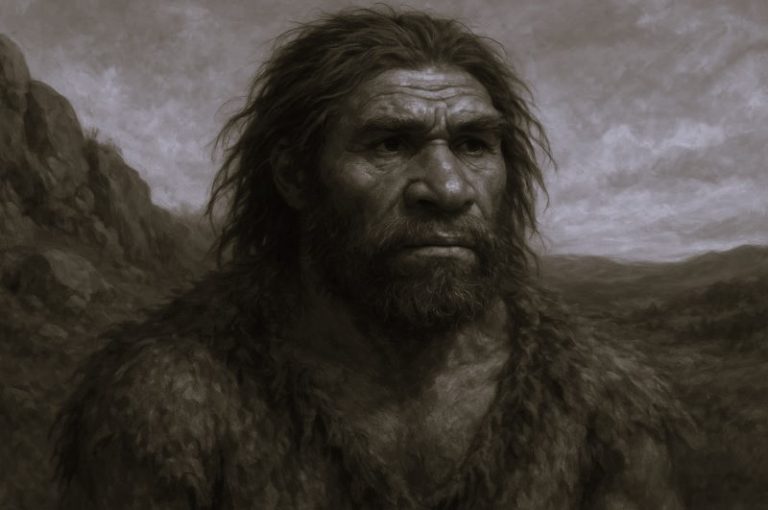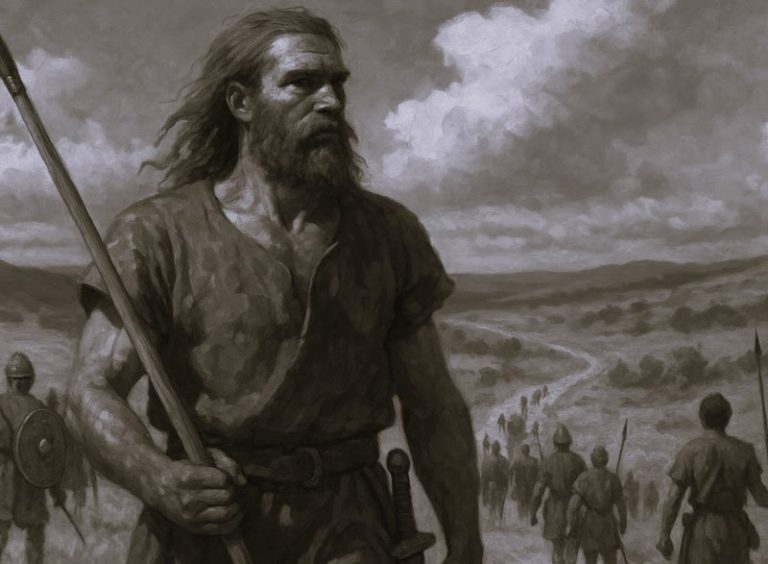

Parks play a broader role in supporting community engagement.
Introduction
In 1853, the City of New York set aside hundreds of acres of swampland in the middle of Manhattan, with the idea that this uninhabitable space could serve a practical, public purpose. Today, we know that area as Central Park, one of the most widely visited and celebrated public spaces in the country. The then-unknown park designer who won the bid to design Central Park, Frederick Law Olmsted, would go on to inspire and revolutionize urban park design in the United States. The work of Olmsted and other early parks pioneers, building on older concepts like town squares, would spur the growth of urban parks large and small nationwide.
Benefiting from new innovations in design, these parks serve as community centers and defining features of cities and towns across the country. Urban parks have continually adapted to meet the needs of the publics they serve, evolving, for example, from places to simply enjoy nature into recreation sites that offer activities and equipment. More than just sites for leisure, they also play a broader role in supporting community engagement by providing places for civic participation, enhancing quality of life and property values, and offering safe, healthy, and convenient recreation options.
Frederick Law Olmsted and Central Park
Overview

New York City’s Central Park was, in some ways, the park that “started it all.”
The first large landscaped public park in the nation, its creation grew out of democratic ideals of equal access, and it had a social and economic impact on the city that came to see it as an identifying focal point, as well as inspiring cities around the country to create their own urban parks.
In turn, it launched the landscape architecture career of Frederick Law Olmsted, a multi-talented, visionary thinker who would go on to design many more public parks and shape the approach of other park designers around the nation.
Frederick Law Olmsted, Landscape Architect

Born in 1822 in Hartford, Connecticut, Frederick Law Olmsted was the son of a prosperous merchant. He did not attend college but rather worked in a wide variety of occupations – seaman, merchant, farmer, journalist and editor.
A journey to Europe to visit many grand parks and a friendship with Andrew Jackson Dowling, a prominent landscape designer, built his interest in parks and their role in an urban society. In 1857, he and Calvert Vaux, an English architect, submitted a design proposal for New York’s Central Park and were awarded the commission. The partners coined the term “landscape architect” and the influential Central Park project launched a long and prolific career for Olmsted.
In addition to designing parks throughout the country, Olmsted also completed plans for the grounds of academic institutions, hospitals, zoos, cemeteries, country estates, the 1893 World’s Columbian Exposition in Chicago, and the US Capitol. During the Civil War he served as executive director of the US Sanitary Commission, a precursor to the Red Cross. His appreciation of landscape and scenic views led to an influential role in the conservation movement, including advocacy for the preservation of natural wonders like Niagara Falls and Yosemite.
Frederick Law Olmsted died in 1903.
Central Park, New York City

Between 1821 and 1855, the size of New York City’s population skyrocketed. Urbanization led to congestion and over-crowded housing for workers while industrialization led to pollution and fatigue. Reformers seeking ways to address these societal and health issues called for public parks as one approach. Parks would provide open green space where everyone, regardless of class, could escape the noise and pollution of the city.
To this end, in 1853, authorization was given to the City of New York for the purchase of a huge swath of land in central Manhattan. Filled with marshes and rocky outcroppings, the parcel would not have been attractive for commercial or agricultural development. In fact, when the park was eventually developed, topsoil had to be carted in from New Jersey as the existing soil would not have supported trees and shrubs.
A contest for the design of the park was won in 1858 by Frederick Law Olmsted and Calvert Vaux. Their submission was notable for the way it combined formal and naturalistic settings with architectural flourishes like Bethesda Terrace and the ornate bridges that circulated traffic through the park.
Construction and landscaping took fifteen years. Over the years elements such as a zoo, museums and recreational facilities were added as the park was shaped by the public that used it.
Central Park, more than 150 years old, receives more than 35 million visitors annually and is an iconic and beloved feature of New York City.
Other Olmsted Parks

Frederick Law Olmsted’s reputation was cemented with the success and renown of New York’s Central Park. His services were in high demand and his firm was involved in the design of nearly 500 projects in forty-five states and several countries, 100 of which were for parks and recreation grounds.
He worked on a wide variety of park projects around the country. In addition to Central Park he designed other large urban parks devoted (initially, at least) to the experience of scenery like Elm Park in Worcester, Massachusetts, and Franklin Park (part of Olmsted’s Emerald Necklace park system) in Boston, Massachusetts.
Parkways were an innovation proposed by Olmsted. He envisioned wide urban greenways carrying several different modes of transportation, connecting parks and extending the benefits of public greenspace throughout the city. Examples of his parkway design include the parkway system in Brooklyn, New York, Martin Luther King Boulevard in Chicago, and the oldest example in Buffalo, New York.
He was also one of the first park designers to think of parks as a system, with a variety of park spaces and sizes offering a wide range of public recreation facilities for all residents in a city.
Types of Parks
Overview

It is possible to distinguish some broad categories of parks in the United States: town squares, large city parks, pleasure grounds or cultural parks, neighborhood parks, and pocket parks.
Each form or type of park was shaped by the social needs and perspectives of the historical period in which it was created. This led to a progression of types that can be described chronologically, but it is important to note that new types of parks emerged alongside existing ones, so that multiple types exist concurrently. Also, an established park may evolve to meet the changing needs of its users, taking on characteristics more common in another category of park, as in the case of a playground being added to a cultural park.
Parks require oversight and maintenance. Larger communities with multiple parks are likely to administer parks as a system, thinking about each park in relation to the others and in relation to the needs of the community as a whole, combining types and approaches to most fully address those needs.
Town Squares

From the earliest days of European settlement of what is now the United States, the first manifestation of public space in many regions was often the town square (alternately called the “town green,” “common,” or “plaza”).
Typically located in the heart of the town, the square was a tract of land owned or used jointly by the residents of the community. It may have initially served as a shared pasture. As towns grew, the square evolved into a park or plaza in front of the original county courthouse or town hall. It often included a monument, fountain, or flagpole to reflect its role in the civic life of the community. Some town squares also served as a market or commercial gathering space.
Town squares hosted civic gatherings, parades, and other community events, as well as serving as informal meeting or recreational space. As city centers became more dedicated to commerce, and as cars came to dominate the urban landscape in the twentieth century, many town squares were reduced to make room for wider roads or parking, or were redeveloped altogether.
City and Cultural Parks

Somewhat ironically, parks we now think of as central or city parks were often originally called “rural” or “country” parks. Originally established on the edges of urban areas in the late 1800s or early 1900s, these were large regional parks or pleasure grounds generally built on what were then the outer reaches of town, where extensive swaths of undeveloped land were still available and reasonably affordable.
Responding to concerns about urbanization and industrialization, park designers often strove to replicate a rural setting to provide an opportunity for park users living far away from the country to have a restorative retreat from the city. Thus groves of trees, rolling meadows, lakes and meandering paths were common features.
As the cities grew to encompass the parks that had once been somewhat remote, and as park users made their interests and preferences known, social and cultural attractions were often added. Zoos, formal gardens, music pavilions, museums, and theatrical venues were all features of what became known as cultural parks.
New York’s Central Park was the seminal example of a city park and was admired and emulated by other cities around the nation.
Neighborhood Parks

Since the late nineteenth century, calls arose for more distributed systems of parks throughout American cities. Growing cities were enfolding the “rural” parks built on what had once been their outskirts, the well-to-do were building stately homes around the now-desireable park locations, and civic leaders felt that working people rarely visited the large parks because of strenuous work schedules and the difficulties of traveling long distances.
It was also believed that the proper “ventilation” of a city was a primary factor in the health of its residents. Parks and open spaces served as lungs generating “currents of air which sweep through neighboring streets cooling the atmosphere and raising noxious effluvia out of harm’s way.” (E. R. L. Gould, “Park Areas and Open Spaces in Cities,” 1888.)
Social and health concerns such as these led many cities to devote resources to creating smaller neighborhood parks that would provide easy access to open or recreational space in order to “recuperate waning energies by physical exercise or quiet rest in the midst of delightful surroundings.” (E. R. L. Gould)
In Minneapolis, Minnesota, for example, park planners decided that no resident should be further than six blocks from a public park. Residents were typically pleased to support park creation as it increased their property values, as well as providing attractive recreational space.
Pocket Parks

As cities grew, urban land prices climbed and open space was at a premium, which made it difficult to create large parks, or even neighborhood parks, despite the desire to provide park space for residents. Creative approaches included pocket parks, parks built over roadways, and publicly accessible green space on private property.
Coined in the 1960s, the term “pocket parks” refers to small (generally smaller than a quarter of an acre), publicly accessible areas that often provide greenery, a place to sit outdoors, and sometimes a playground for children. They may be created on vacant building lots or as part of a large building development’s public space requirement.
One example is Freeway Park, which opened in 1976 in downtown Seattle, Washington. It links multiple small pockets of space to create an interesting park complex. The park extends over and around an interstate and large public parking lot, using fountains, greenery, and linked plazas to draw together neighborhoods previously divided by the freeway.
Park Design
Overview

A specific park design makes assumptions about the use and purpose of the park. The designer tries to meet certain perceived needs and create spaces to be used in certain ways.
Park design and use changed over time, particularly in relation to two design elements:
- Naturalistic versus natural. A naturalistic landscape imitates nature, perhaps recreating an idealized form, rather than preserving the existing, natural, environment.
- Passive versus active use of parks. Passive recreation often makes use of the open space and scenic aspects of a park in relatively quiet and low intensity ways and might require amenities like paths, benches, and rustic picnic tables. Active recreation often involves cooperative or team activity, might be somewhat noisy and might require facilities like playgrounds, ball fields, swimming pools, or the like.
Attitudes around these elements shifted through time, and their implementation in any particular design was affected by factors like type, size, or location of a park. Parks themselves evolved as needs and preferences changed.
Naturalistic . . . .

Many of the early public parks were built in burgeoning cities as a means of dealing with the pressures of urbanization and industrialization. Land was already becoming scarce and expensive and the expanses affordable and available for park development were often not attractive for other uses—swamps, marshes, ravines, and the like. Not naturally picturesque, they required manipulation to become the scenic pastoral settings toward which early park planners strove.
Planners would manipulate the existing environment to create more pleasing settings, doing things like dredging marshes and swamps to create lakes or grading the land to create rolling meadows. In New York’s Central Park, more gunpowder was used blasting rocky ridges to change the topography than was later used in the entire Battle of Gettysburg.
The eventual effect of the picturesque landscape, secluded walks, and sheltering trees and shrubs was to stand in contrast with the bustling, crowded city from which the park was to provide respite.
. . . . or Natural?

Towns in the Midwest and on the frontier in the late 1800s benefitted from being aware of the discussions of the value and benefits of public parks, and the example of Central Park, before their cities had yet grown too large. Those with forward-thinking planners were sometimes able to preserve areas of natural beauty for the public good. It was a balancing game of having enough of a population and tax base to have funds to purchase land, while land was still affordable and not yet developed.
It was not necessarily an easy road. An 1865 meeting in Minneapolis, Minnesota, held to discuss the idea of acquiring a central park, elicited responses like “Why do we need a park? There will never be a house south of Tenth Street.” or “The whole city south of Franklin is a park.”
Lovely natural features in many cities were lost to industrial development due to lack of funds or the will to preserve them. But many were indeed preserved and remain as parks today.
As cities have continued to expand, in recent decades the issues of preservation and public access have reached suburban and exurban areas as well, leading to the development of county and regional park systems.
Passive . . . .

We want a ground to which people may easily go when the day’s work is done, and where they may stroll for an hour, seeing, hearing, and feeling nothing of the bustle and jar of the streets where they shall, in effect, find the city put far away from them . . . . – Frederick Law Olmsted, Landscape Architect, 1870
The primary intent of early park planners such as Frederick Law Olmsted, was to provide lovely public places for soothing, family-oriented activities such as walks, picnics, or birdwatching—what we would now call passive recreation.
In fact, many early park administrators had stringent rules on use—such as bans on alcohol, group picnics, and dancing—to preserve the serene and contemplative atmosphere the park planners had intended. Some historians state that these sorts of controls had the effect of discouraging park use by the working class and immigrant people for whom the idealistic planners had said the parks were intended.
But people kept coming to parks, using them in their preferred ways, and making requests for facilities to meet their needs until park planners were compelled to accommodate the growing demand for more active park uses.
. . . . or Active?

The desires and preferences of park users did not always align with the intent and preferences of early park planners and administrators. Not content with strolling through picturesque pastoral landscapes, users began to clamor for more active options.
Swimming beaches and ice skating rinks (in appropriately cold climates) were some of the first activities added to early urban parks, as they made use of existing water features and did not require significant additional infrastructure.
In the early 1900s, progressive reformers and working-class users began clamoring for additional facilities for active recreation in parks. Many of the large city and cultural parks added areas for active recreation, but took care to separate them so as to reduce the noise and number of people in areas of the park devoted to more serene activities.
As smaller, widely distributed neighborhood parks became more common, they were identified as ideal places for playgrounds, tennis courts, and ball fields. Park administrators soon realized that active recreation facilities should be the primary focus for neighborhood parks instead of landscaping, and park users responded by participating in park activities in ever growing numbers.
Park Features and Facilities
Overview

Once land was obtained for a park, the work of design and implementation began.
Existing topographical assets were assessed. Designs were prepared making use of or changing those features. Paths and plantings were laid out, with accompanying infrastructure like roads, bridges, and retaining walls.
Depending on the nature and purpose of the park, additional features might be included like benches, picnic tables and grills, buildings, playgrounds, and recreational facilities.
The establishment of a park could take years. Funds were not always available to accomplish all the desired elements at once. Dredging lakes, draining marshes, and re-grading terrain were significant undertakings. And trees, shrubs, and other plantings take years to grow into the lovely landscaping intended by the designer.
But with time the various elements and features come together to make a pleasant, inviting park setting for community use. It is interesting to note how regional differences in natural resources, geography and landscape options lead to tangible differences in park designs, building materials and recreational features.
Paths and Plantings

After the acquisition of land for a park, one of the first tasks was to plan the layout of paths and plantings. Some sites needed significant grading to achieve the early “naturalistic” ideal of meandering paths with rises and curves so gentle that park visitors would not be distracted from their admiration of the landscape around them.
Depending on the era, path and road planning needed to accommodate pedestrian walks, drives for carriages or cars, and paths for equestrians or bicycles. Care was taken to keep commercial traffic out of parks.
Plantings and gardens were essential to the role of parks as green spaces and fresh air “lungs” for their cities. Depending on their size and purpose, parks might contain flowerbeds, formal or stylized gardens, carefully created pastoral landscapes, arboretums, or even enclosed conservatories.
Many park designers created a boundary of trees and shrubs along the edges of the park to evoke a sense of separation from the city or neighborhood surrounding it.
To get a sense of just how significant the planting effort could be, In the first nine years of the creation of the Golden Gate Park in San Francisco, California, 155,000 trees were planted over 1,000 acres—and that doesn’t take into account the shrubs and flowers that would also have been included.
Structures

Structures built in parks ranged from modest to grand relative to the size and purpose of the park and the financial resources of the park planners.
Common structures in the nineteenth century included gazebos and bandstands. Picnic pavilions, restrooms, and recreation buildings became important features starting in the early twentieth century as parks began to accommodate more active uses.
Infrastructure elements such as roads, bridges, or walls made up a large part of construction and maintenance expenses for park administrators.
Cultural parks might include more elaborate or extensive buildings for features like museums, conservatories, and zoos. Structures like these were often added to existing parks as their role changed from a restful rural retreat on the edge of town to more of an event and gathering place. An example of such a park is Golden Gate Park in San Francisco, California.
Recreation Facilities

While many large city or cultural parks came to include areas for active recreational activities, neighborhood parks had a special focus on recreation and need for facilities to support them. Demand from park users for such facilities began to rise in many areas of the country in the 1920s and 1930s. Playground advocates had focused largely on the needs of children, but with the expansion in recreation programs, park administrators observed dramatic increases in adult participation in park activities.
Fields and courts for sports like tennis, baseball, and football were included in park plans to support informal play as well as organized league play. Many parks provided field houses or recreation buildings for indoor activities, and more specialized facilities for activities like horseshoes, shuffleboard, or croquet. Wading and swimming pools were also a popular recreation feature of municipal parks and some cities were able to build golf courses as part of their park system.
Playgrounds

Playgrounds are an almost universal element of most urban parks today, but that has not always been the case.
After 1910, cars were becoming a ubiquitous feature in cities. Concerns grew about unsupervised children playing in the streets, disrupting traffic and sometimes actually being killed. Arguments were raised in favor of playground and recreation spaces that would provide places where children could have the benefit of pure air and be free from the “dangers and pernicious influence of the streets.” Some early park administrators felt that playgrounds would be too noisy, or that children would not behave with appropriate respect toward park grounds and facilities, but by the 1920s, playgrounds began to appear in park plans.
Many early park playgrounds included equipment for younger children such as swings, “teeters,” and “sand pits” but much of the equipment was actually intended for older children and youth, such as high bars, pommel horses, rings, and other items that required some gymnastic training and supervision.
Parks at the Heart of Their Communities
Overview

Successful urban and regional parks create identity for the communities around them—as evidenced by the many neighborhoods that share the name of the park at their core, like the Lincoln Park neighborhood of Chicago.
From the late 1800s through today, parks have been a point of pride for a city. Emerging towns in frontier America would boast of their parks in promotional materials designed to lure investors and settlers from the East. The wide array of early postcards depicting local parks is additional evidence of communities’ pride in them.
Urban parks are typically open, public places that can hold many people at once. These features have led them to be put to use as formal and informal gathering spaces, for civic or community events, and for planned or spontaneous events. Parks have even been put to unexpected dramatic use in times of crisis as as a place for people to gather and for authorities to provide services to those in need.
Much as early promoters touted many social and economic benefits of parks, advocates today cite impacts like the following:
Parks attract non-resident visitors who put new dollars into local economies.
Proximity to parks and open space enhances the value of residential properties and produces increased tax revenues for communities.
Open space captures precipitation, reduces stormwater management costs, and protects underground water sources that often provide drinking water.
Trees and shrubs reduce air pollution control costs.
Parks provide habitat for wildlife.
Civic Space

As publicly-owned land, parks have long been used to stage a wide variety of civic events and activities.
They provide a neutral space for community members to come together for parades, political rallies, and protest marches; for Fourth of July and Memorial Day celebrations; to host visiting dignitaries; and for other elements of a city or region’s public life.
Features such as bandstands or amphitheaters can be used for rallies or speeches, boulevards or parkways provide excellent routes for parades, monuments can be a focal point for a memorial or ceremony, and gardens provide lovely backdrops for important photo opportunities. Many parks were designed with an expansive meadow or open space specifically to accommodate large groups of people at such events.
Community Space

Parks both give identity to and serve the communities around them.
People use them in formal and informal ways, for events that are spontaneous and others that are organized. Parks host concerts, festivals, races, and community fairs. People take advantage of their lovely settings to take wedding photos and to hold picnics; they use the recreational facilities to play sports or exercise. Organizations reserve meeting rooms, balls fields, or field houses for group activities and events. Park and recreation boards themselves offer sports leagues and community education courses.
Frederick Law Olmsted’s belief that public parks could serve as meeting grounds for people of different backgrounds and economic means has played out in a rich diversity of ways he likely could not have predicted.
Parks as Memorials

Urban and regional parks often serve as memorials for their communities.
They might be named in honor of an individual, like Lincoln Park in Chicago, Illinois, or of a group, like the innumerable “Veterans Memorial Parks” found across the United States, or Freedom Park in Charlotte, North Carolina.
They might contain a statue, monument, or artifact commemorating a person or event. Civil war cannons, tanks from one of the World Wars, and even retired airplanes can be found in parks across the US to honor veterans and remind their communities of residents who served their county.
Some parks contain plaques of dedication or informational displays to educate visitors about a person or historical event related to the location or community of the park.
This exhibition was created as part of the DPLA’s Public Library Partnerships Project by collaborators from the Minnesota Digital Library. Exhibition Coordinator: Carla Urban.
Published by the Digital Public Library of America (DPLA), September 2015, under the terms of a Creative Commons Attribution 3.0 Unported license.






